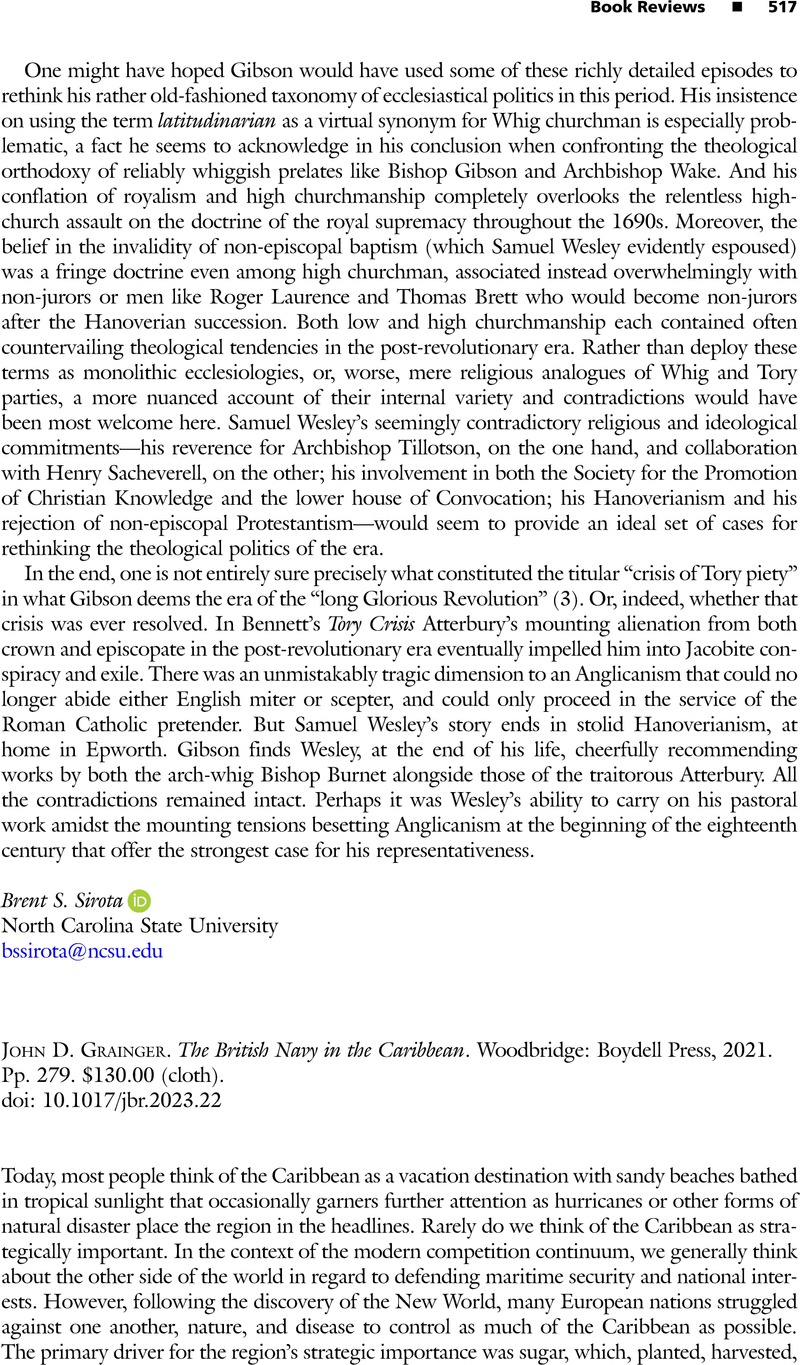No CrossRef data available.
Article contents
John D. Grainger. The British Navy in the Caribbean. Woodbridge: Boydell Press, 2021. Pp. 279. $130.00 (cloth).
Review products
John D. Grainger. The British Navy in the Caribbean. Woodbridge: Boydell Press, 2021. Pp. 279. $130.00 (cloth).
Published online by Cambridge University Press: 05 June 2023
Abstract
An abstract is not available for this content so a preview has been provided. Please use the Get access link above for information on how to access this content.

- Type
- Book Review
- Information
- Copyright
- Copyright © The Author(s), 2023. Published by Cambridge University Press on behalf of the North American Conference on British Studies



